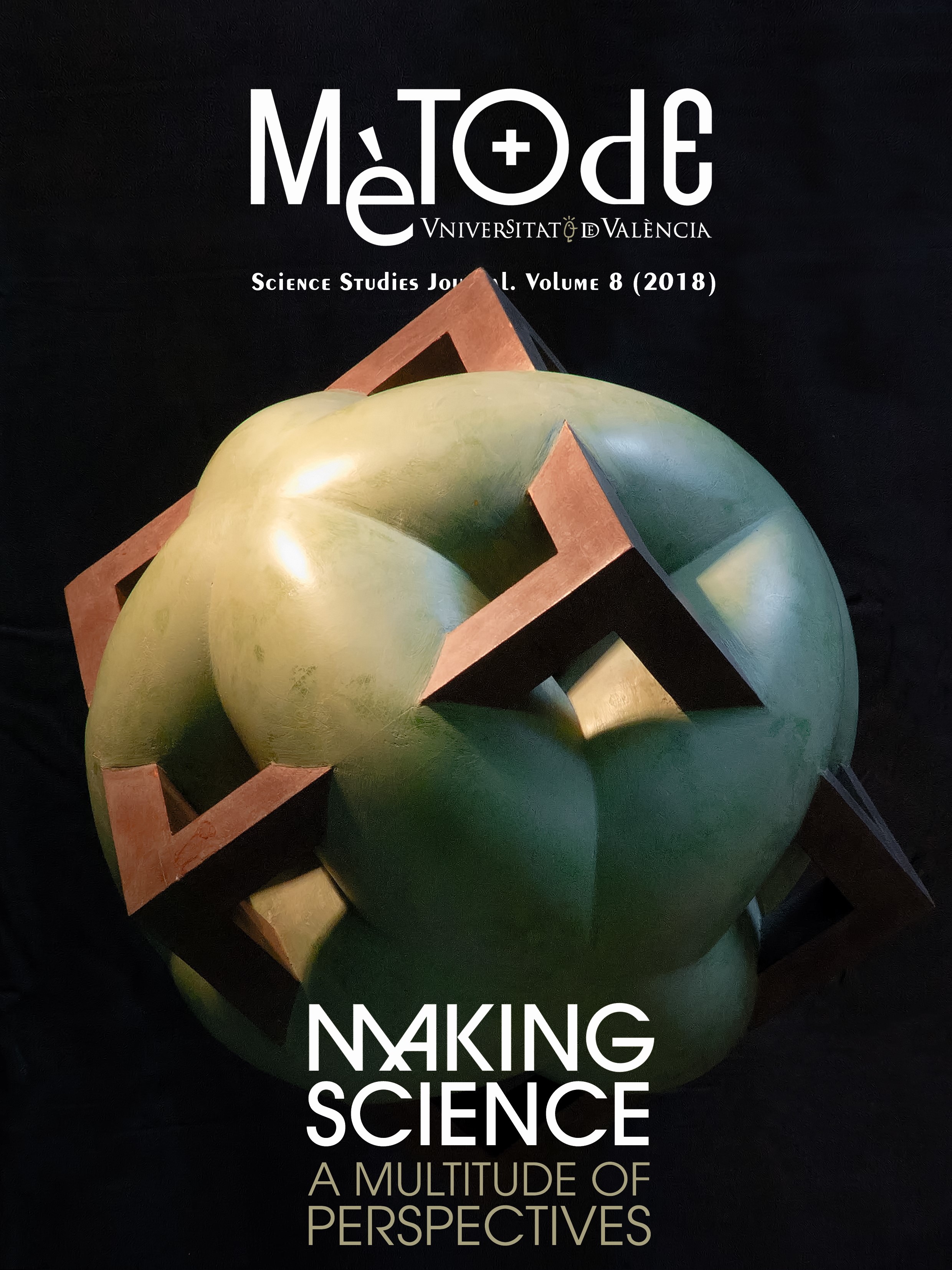Divans i gurus: L'origen i els perills de la pseudopsicologia clínica
DOI:
https://doi.org/10.7203/metode.8.9977Paraules clau:
pseudociència, psicologia, psicoanàlisi, new age, psicoteràpies Resum
Resum
La pseudociència presenta una alarmant presència en el context de la psicologia clínica i és, a més, molt perillosa. Com a conjunt d’idees pseudocientífiques, la pseudopsicologia clínica mostra la peculiar característica de constituir tota una tradició paral·lela a la psicologia, amb nombroses ramificacions i construccions teòriques i pràctiques interrelacionades. En aquest escrit repassarem aquesta tradició, des de la hipnosi pseudocientífica fins a la psicoanàlisi, i des de la new age fins a l’actual neuropseudociència. Tot seguit, revisarem alguns dels perills de la pseudociència relacionats amb els trastorns mentals.
 Descàrregues
Descàrregues
 Referències
Referències
Braun, K. A., Ellis, R., & Loftus, E. F. (2002). Make my memory: How advertising can change our memories of the past. Psychology & Marketing, 19(1), 1–23. doi: 10.1002/mar.1000
Cuijpers, P., Sijbrandij, M., Koole, S. L., Andersson, G., Beekman, A. T., & Reynolds, C. F. (2013). The efficacy of psychotherapy and pharmacotherapy in treating depressive and anxiety disorders: A meta-analysis of direct comparisons. World Psychiatry, 12(2), 137–148. doi: 10.1002/wps.20038
Darnton, R. (1968). Mesmerism and the end of the Enlightenment in France.Cambridge: Harvard University Press.
Fasce, A. (2017). Los parásitos de la ciencia. Una caracterización psicocognitiva del engaño pseudocientífico. Theoria: An International Journal of Theory, History and Foundations of Science, 32(3): 345-363. doi: 10.1387/theoria.17775
Gauld, A. (1992). A history of hypnotism.New York: Cambridge University Press.
Gelfand, T., & Kerr, J. (1992). Freud and the history of psychoanalysis.New Jersey: The Analytic Press.
Hansson, S. O. (2009). Cutting the Gordian Knot of demarcation. International Studies in the Philosophy of Science, 23(3), 237–243. doi: 10.1080/02698590903196007
Heelas, P. (1996). The New Age Movement. New Jersey: Blackwell Publishing.
Herbert, J. D., Lilienfeld, S. O., Lohr, J. M., Montgomery, R. W., T O’Donohue, W., Rosen, G. M., & Tolin, D. F. (2000). Science and pseudoscience in the development of eye movement desensitization and reprocessing: Implications for clinical psychology. Clinical Psychology Review, 20(8), 945–971. doi: 10.1016/S0272-7358(99)00017-3
Hughes, S., Lyddy, F., & Lambe, S. (2013). Misconceptions about psychological science: A review. Psychology Learning and Teaching, 12(1), 20–31. doi: 10.2304/plat.2013.12.1.20
Johnson, M., & Pigliucci, M. (2004). Is knowledge about science associated with higher skepticism of pseudoscientific claims? The American Biology Teacher, 66(8), 536–548. doi: 10.2307/4451737
Lilienfeld, S. O. (2007). Psychological treatments that cause harm. Perspectives on Psychological Science, 2(1), 53–70. doi: 10.1111/j.1745-6916.2007.00029.x
Lilienfeld, S. O., Lynn S. J., & Lohr, J. M. (Eds). (2003). Science and pseudoscience in clinical psychology.New York: The Guilford Press.
Lilienfeld, S., Lohr, J., & Morier, D. (2004). The teaching of courses in the science and pseudoscience of psychology: Useful resources. Teaching of Psychology, 28(3), 182–191. doi: 10.1207/S15328023TOP2803_03
Loftus, E., & Ketcham, K. (1994). The myth of repressed memory.New York: St. Martin’s Press.
Majima, Y. (2015). Belief in pseudoscience, cognitive style and science literacy. Applied Cognitive Psychology, 29(4), 552–559. doi: 10.1002/acp.3136
Marcus, D. K., O’Connell, D., Norris, A. L., & Sawaqdeh, A. (2014). Is the Dodo bird endangered in the 21st century? A meta-analysis of treatment comparison studies. Clinical Psychology Review, 34(7), 519–530. doi: 10.1016/j.cpr.2014.08.001
Meyer, C. (Ed.). (2005). Le livre noir de la psychanalyse: Vivre penser et aller mieux sans Freud. Paris: Les Arènes.
Salkovskis, P. (2002). Review: Eye movement desensitization and reprocessing is not better than exposure therapies for anxiety or trauma. Evidence-based Mental Health, 5(1), 13. doi: 10.1136/ebmh.5.1.13
Singer, M., & Lalich, J. (1996). Crazy therapies: What are they? Do they work? New Jersey: Jossey-Bass.
Stapleton, P., Chatwin, H., Boucher, E., Crebbin, S., Scott, S., Smith, D., & Purkis, G. (2015). Use of complementary therapies by registered psychologists: An international study. Professional Psychology: Research and Practice, 46(3), 190–196. doi: 10.1037/pro0000015
Smit, Y., Huibers, M. J., Ioannidis, J. P., Van Dyck, R., Van Tilburg, W., & Arntz, A. (2012). The effectiveness of long-term psychoanalytic psychotherapy: A meta-analysis of randomized controlled trials. Clinical psychology review, 32(2), 81–92. doi: 10.1016/j.cpr.2011.11.003
Descàrregues
Publicades
Com citar
-
Resum2651
-
PDF 1332
Número
Secció
Llicència
![]()
Tots els documents inclosos en OJS són d'accés lliure i propietat dels seus autors.
Els autors que publiquen en aquesta revista estan d'acord amb els següents termes:
- Els autors conserven els drets d'autor i garanteixen a la revista el dret a la primera publicació del treball, llicenciat baix una llicència de Reconeixement-NoComercial-SenseObraDerivada 4.0 Internacional de Creative Commons, que permet a altres compartir el treball amb un reconeixement de l'autoria del treball i citant la publicació inicial en aquesta revista.
- Es permet i s'anima els autors a difondre la versió definitiva dels seus treballs electrònicament a través de pàgines personals i institucionals (repositoris institucionals, pàgines web personals o perfils a xarxes professionals o acadèmiques) una vegada publicat el treball.





